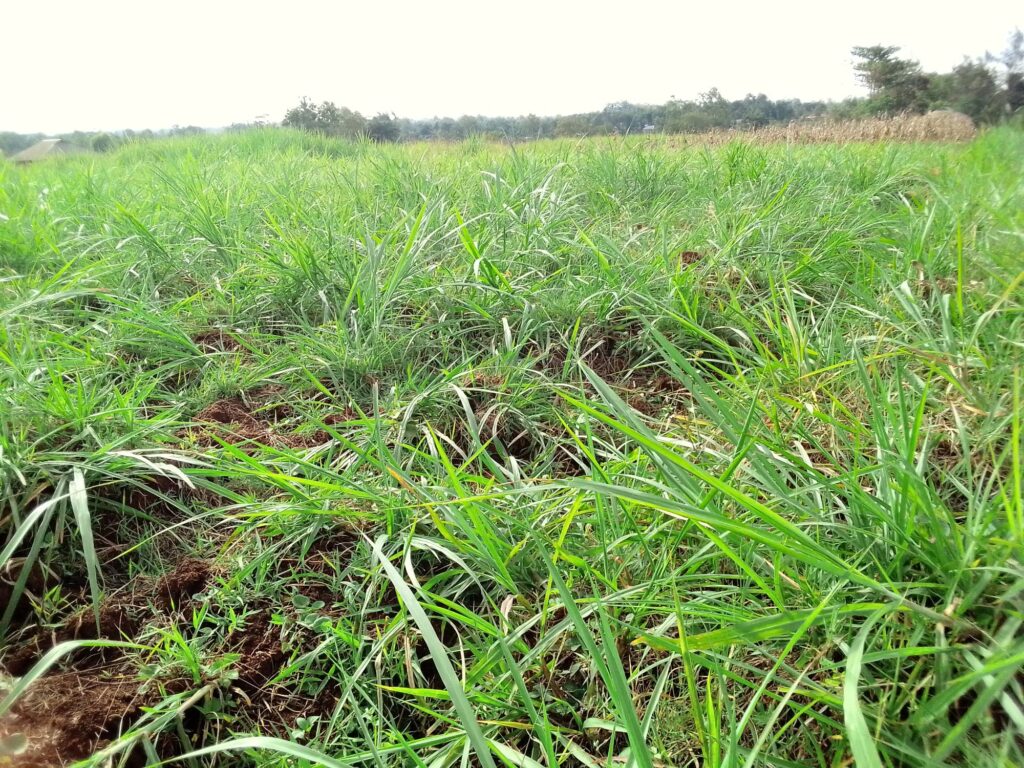
Napier grass (Pennisetum purpureum) is one of the most important fodder crops for dairy and livestock farmers in Africa and beyond. It is fast-growing, high-yielding, and can be harvested several times a year, making it the backbone of zero-grazing and cut-and-carry systems. In this post, we look at the main varieties, ecological requirements, establishment, management, defoliation, utilization, and importance of Napier grass.
Main Varieties of Napier Grass
Over time, several varieties of Napier grass have been developed to suit different conditions:
Bana Napier – Drought-tolerant and good for cut-and-carry feeding.
Clone 13 – Very productive, ideal for silage.
French Cameroon (Common Napier) – Fast-growing and widely adapted.
Pakchong 1 (Thailand Hybrid) – High-yielding with good protein content.
Kakamega 1 & 2 – Resistant to the devastating Napier head smut disease.
Ecological Requirements
Napier thrives best under the following conditions:
Rainfall: 1,000–1,500 mm annually, well distributed.
Temperature: 25–35°C is ideal.
Altitude: Performs well from sea level up to 2,000 m.
Soils: Deep, fertile, well-drained loamy soils. Avoid waterlogged areas.
Establishment
1. Land Preparation: Plough and harrow to achieve a fine seedbed.
2. Planting Material: Use healthy stem cuttings (3 nodes each) or root splits.
3. Spacing:
Intensive farming: 90 × 60 cm.
Extensive farming: 100 × 100 cm.
4. Planting Depth: 10–15 cm in moist soil.
5. Fertilization: Apply well-rotted manure or compost at planting, then top-dress with nitrogen fertilizers (CAN or urea) after establishment.
Management Practices
Weeding: Crucial in the first 2–3 months before canopy cover.
Manure & Fertilizer: Regular application maintains productivity.
Watering: Irrigate in dry seasons for continuous fodder.
Pest & Disease Control: Watch for smut disease, stunt, and stem borers. Plant resistant varieties like Kakamega 1 & 2.
Thinning: Remove weak plants for better stand density.
Defoliation (Harvesting)
First Harvest: 3–4 months after planting (1–1.5 m tall).
Subsequent Harvests: Every 6–8 weeks depending on rainfall and soil fertility.
Cutting Height: Leave stubble of 5–10 cm for faster regrowth.
For Silage: Harvest before flowering (1.2–1.5 m tall) for higher protein content.
Utilization of Napier Grass
Fresh Feeding (Cut-and-Carry): Fed directly to cattle, goats, and sheep.
Silage: Excellent for conserving feed during the dry season.
Hay: Can be dried for storage, though stems are thick.
Soil Conservation: Acts as a natural barrier against erosion when planted along contours.
Fodder Banks: Stored for dry-season feeding.
Energy Use: Emerging use in biogas and biomass fuel production.
Read more on: Biogas Production: rural Kenya cooking solution
Importance of Napier Grass
- Produces up to 150–200 tons of fresh fodder per hectare per year under good management.
- Provides 8–12% crude protein, especially in young growth.
- Backbone of zero grazing and intensive dairy systems in East Africa.
- Improves soil fertility and prevents erosion.
- Extra fodder can be sold for additional income.
- Some varieties are drought and disease tolerant, ensuring resilience.
Read about: Dairy goat farming in kenya: breeds and benefits
Final Word
Napier grass remains the most reliable fodder crop for farmers who want consistent feed supply, higher milk yields, and sustainable livestock systems. With proper establishment and management, farmers can depend on it as a cornerstone of profitable dairy and livestock farming.

Disclosure: This banner contains an affiliate link. I may earn a commission if you purchase through it, at no extra cost to you.
